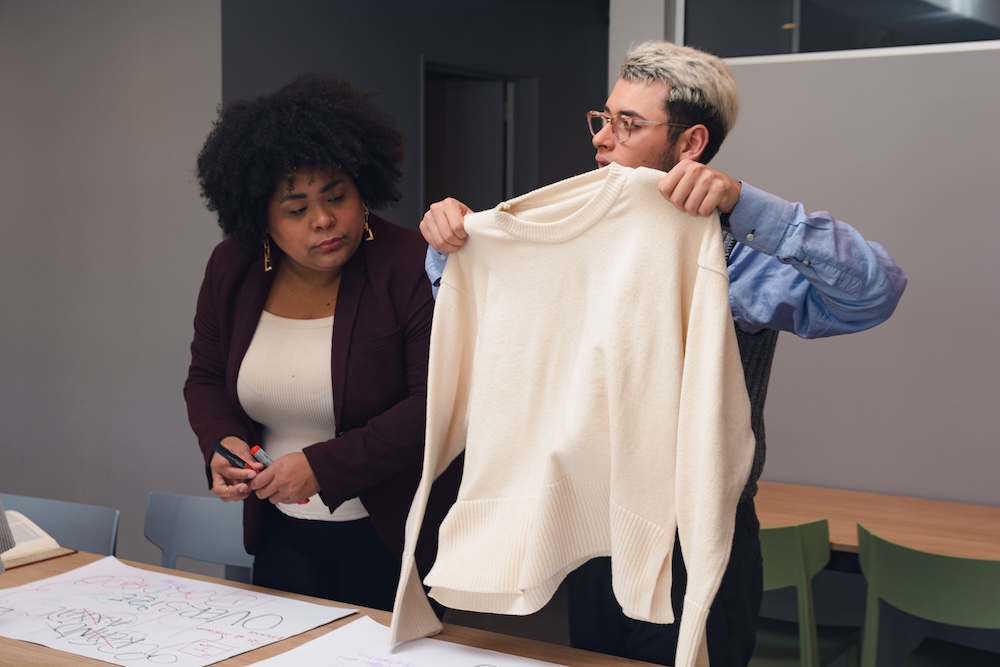The fashion industry is responsible for an estimated 10% of global carbon emissions and consumes more water than the shipping and aviation industries combined. Fast fashion has fueled overproduction, cheap disposables, and mountains of textile waste. But a shift is underway: sustainable fashion is rising as designers, consumers, and innovators rethink how clothing is made, worn, and reused.
This isn’t just about fabrics or trends — it’s about building a circular system where fashion protects both people and planet.
What Is Sustainable Fashion?
Sustainable fashion refers to clothing designed, produced, and consumed in ways that:
- Minimize environmental harm through low-impact materials and processes.
- Prioritize fair labor practices for workers across the supply chain.
- Support circularity — making clothes durable, repairable, and recyclable.
It is both an environmental movement and a cultural shift away from disposable, trend-driven consumption.
Why Sustainable Fashion Matters
- Pollution: Textile dyeing is the world’s second-largest water polluter.
- Waste: 92 million tons of textile waste are generated annually, much of it landfilled or burned.
- Social impact: Millions of garment workers earn poverty wages in unsafe conditions.
Sustainable fashion aims to solve all three challenges together: reducing carbon footprints, conserving resources, and respecting human rights.
Key Sustainable Fashion Practices
1. Use of Sustainable Materials
- Recycled fabrics: Repurpose plastic bottles, old textiles, or industrial scraps.
- Organic cotton: Uses less water and avoids toxic pesticides.
- Hemp: Grows quickly, needs minimal inputs, and is highly durable.
- Lyocell/Tencel: Produced in closed-loop systems that recycle water and solvents.
Note: “Plant-based” or “biodegradable” doesn’t automatically mean sustainable. Sourcing, processing, and end-of-life management all matter.
2. Upcycling and Repurposing
Designers and small artisans are giving new life to old textiles:
- Turning discarded denim into bags.
- Using scrap fabrics for accessories.
- Redesigning vintage garments into modern cuts.
This reduces waste, saves resources, and creates one-of-a-kind pieces.
3. The Slow Fashion Movement
Slow fashion shifts the focus from quantity to quality and longevity.
- Capsule wardrobes: Fewer, versatile pieces that mix and match.
- Investment pieces: Durable staples built to last years, not months.
- Mindful shopping: Buying less, repairing more, and resisting fast fashion cycles.
By extending the life of a garment by just nine months, we can reduce its carbon, water, and waste footprints by 20–30% (WRAP UK).
4. Sustainable Fashion Technology
Innovation is reshaping design and production:
- 3D printing creates precise garments with minimal waste.
- Digital fashion reduces the need for physical samples.
- Eco dyeing uses natural pigments and closed-loop water systems.
These technologies cut water, chemical, and material use — some are already being piloted by large brands.
Brands Leading (and Learning) in Sustainable Fashion
- Stella McCartney: Early pioneer, invests in next-gen materials like mushroom leather.
- Reformation: Popular with Gen Z, transparent about its supply chain and impacts.
- Patagonia: Longtime leader in repair, resale (Worn Wear), and activism.
- Eileen Fisher: Focuses on durability and garment take-back programs.
⚠️ While these brands are setting benchmarks, no brand is 100% sustainable. Overproduction, marketing spin, and scaling challenges remain — consumers should look for transparency and longevity, not perfection.
Final Thoughts
Sustainable fashion isn’t about chasing “green trends” — it’s about slowing down, buying less, and choosing better. The most sustainable garment is the one already in your closet.
By embracing slow fashion, supporting circular practices, and holding brands accountable, we can transform fashion from one of the planet’s most polluting industries into a driver of positive change.
Every purchase is a signal. Choose clothing that supports durability, fairness, and circularity — and you’ll help create a fashion system that’s better for people, communities, and the Earth.









Reader Interactions